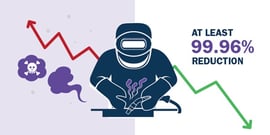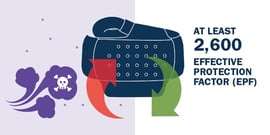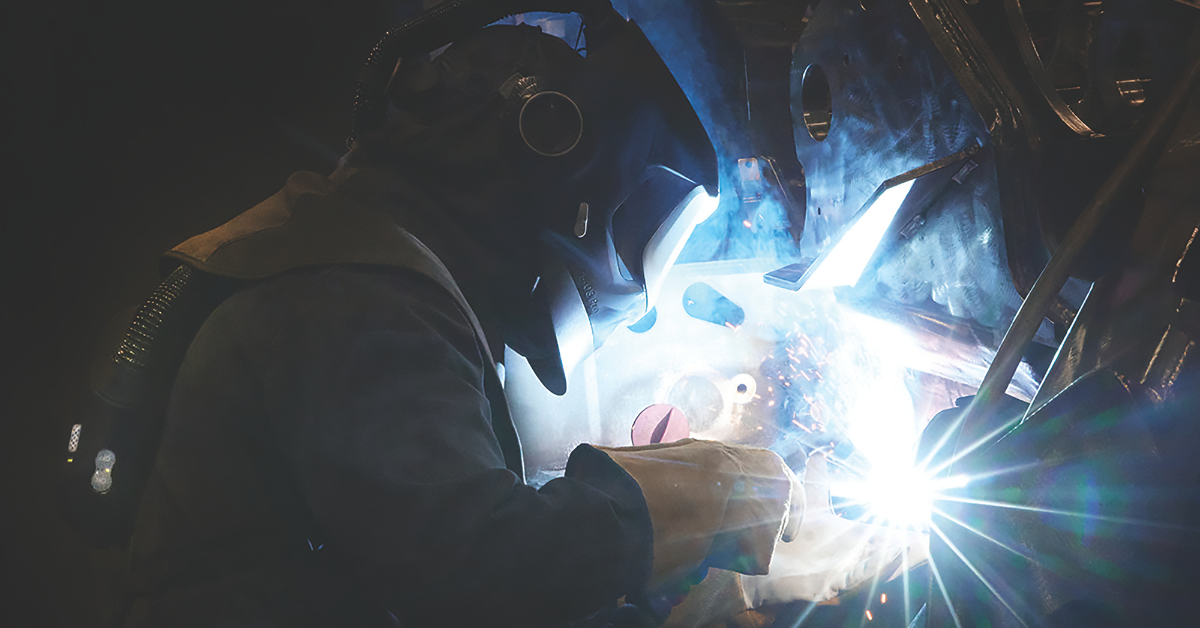Measure welding fume in your workshop
With the recent change to the Workplace Exposure Standard (WES) for welding fume, many workshops are wanting to understand the effectiveness of their...
Countless studies have concluded that welding fume is bad for health, yet few have given practical guidance on how to effectively control welding fume exposure… until now.
A recent independent Australian study compared the effectiveness of different welding fume product control methods in reducing exposure to welding fume. These included On-Gun Fume Extraction, Hooded Capture Local Exhaust Ventilation (LEV), and Welding Helmets with Powered Air Purifying Respirators (PAPR).
The results of the study were organised into two categories:

With a reduction in exposure of at least 99.96%*, the 3M™ Speedglas Welding Helmet with an Integrated PAPR was by far the most effective measure in protecting the welder from welding fume exposure when compared to On-Gun and Hooded Capture LEV.
The PAPR system also provided an Effective Protection Factor (EPF) of at least 2,600*, reducing exposure to at least 1/2600th of the outside concentration – that’s 52 times better than the Required Minimum Protection Factor (RMPF) of 50 specified in AS/NZS 1715:2009.PAPR should therefore be considered a priority in situations where the welder is the only person needing protection from welding fume.

It is an employer’s legal responsibility to reduce welding fume exposure to as low as reasonably practicable for all persons, not just the welder. The study showed that, On-Gun Fume Extraction removed 33% more welding fume from the environment than Hooded Capture LEV*. The Translas fume extraction gun was able to extract up to 97% of the welding fume, with an average of 90% across all tests.
On-gun extraction also has the added benefit of following the welder as they move, unlike fixed LEV hooded capture, which requires the welder and welding arc location to be perfectly positioned and relatively stationary.
which requires the welder and welding arc location to be perfectly positioned and relatively stationary.
The Workplace Exposure Standard for Welding Fume has been lowered from 5mg/m3 to 1mg/m3. While this is a massive step in the right direction, action needs to be taken to reduce welding fume exposure below this new legal limit. The results of this study give clear and actionable guidance on reducing welding fume exposure not only to 1mg/m3, but well below this new level.
This guidance does not address confined spaces. Today’s current welding fume product controls have their limitations in a confined space. There should be a suitably trained and knowledgeable person doing the assessment and design of a safe system for any confined space entry.
Related Articles
.png)
With the recent change to the Workplace Exposure Standard (WES) for welding fume, many workshops are wanting to understand the effectiveness of their...

Recent research into the Effectiveness of Welding Fume Product Controls has revealed that a combination of respiratory PPE (e.g. a welding helmet...

Across the full spectrum of applications, welders require continuous protection from a range of optical and respiratory hazards. These hazards can...